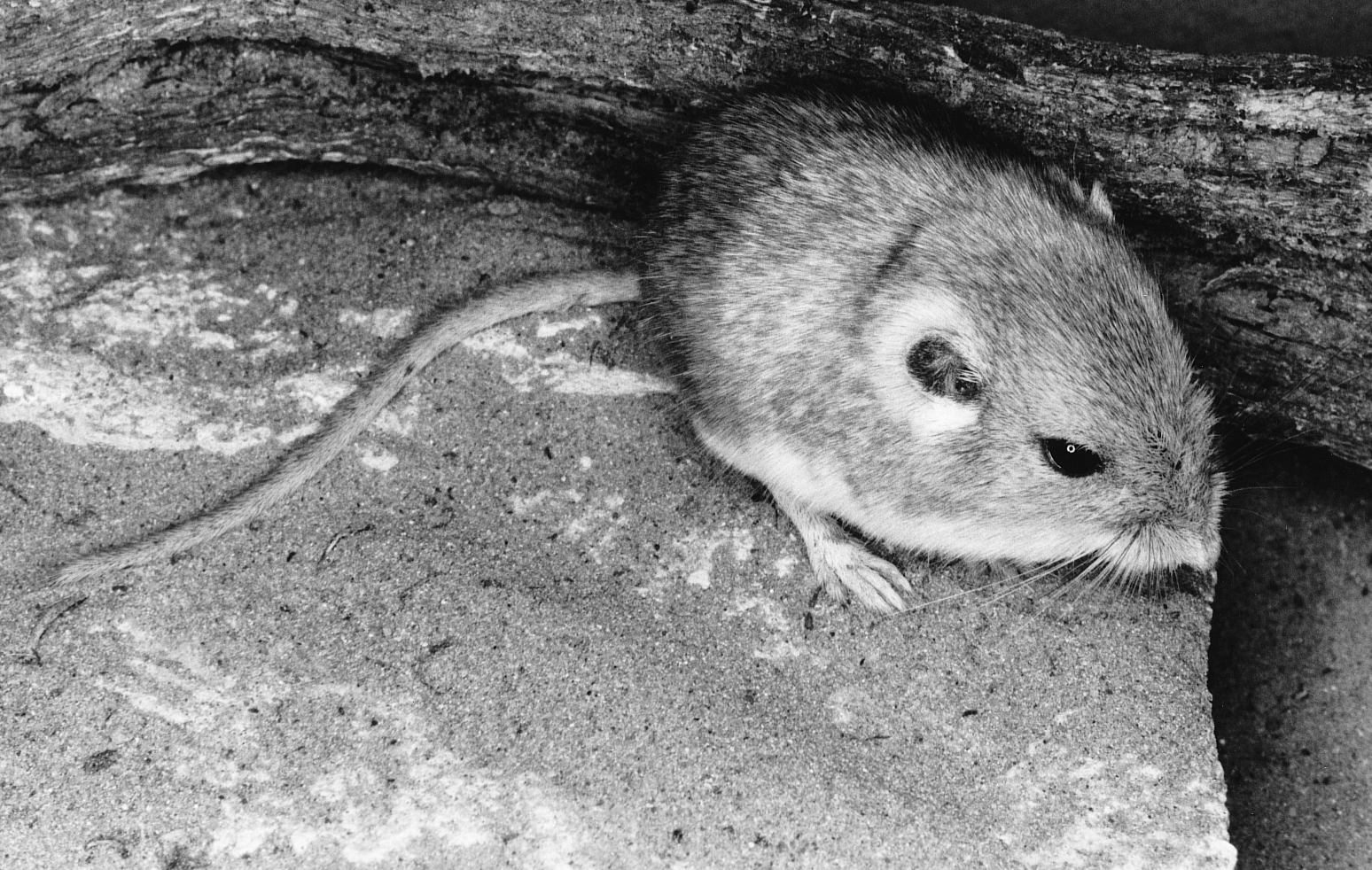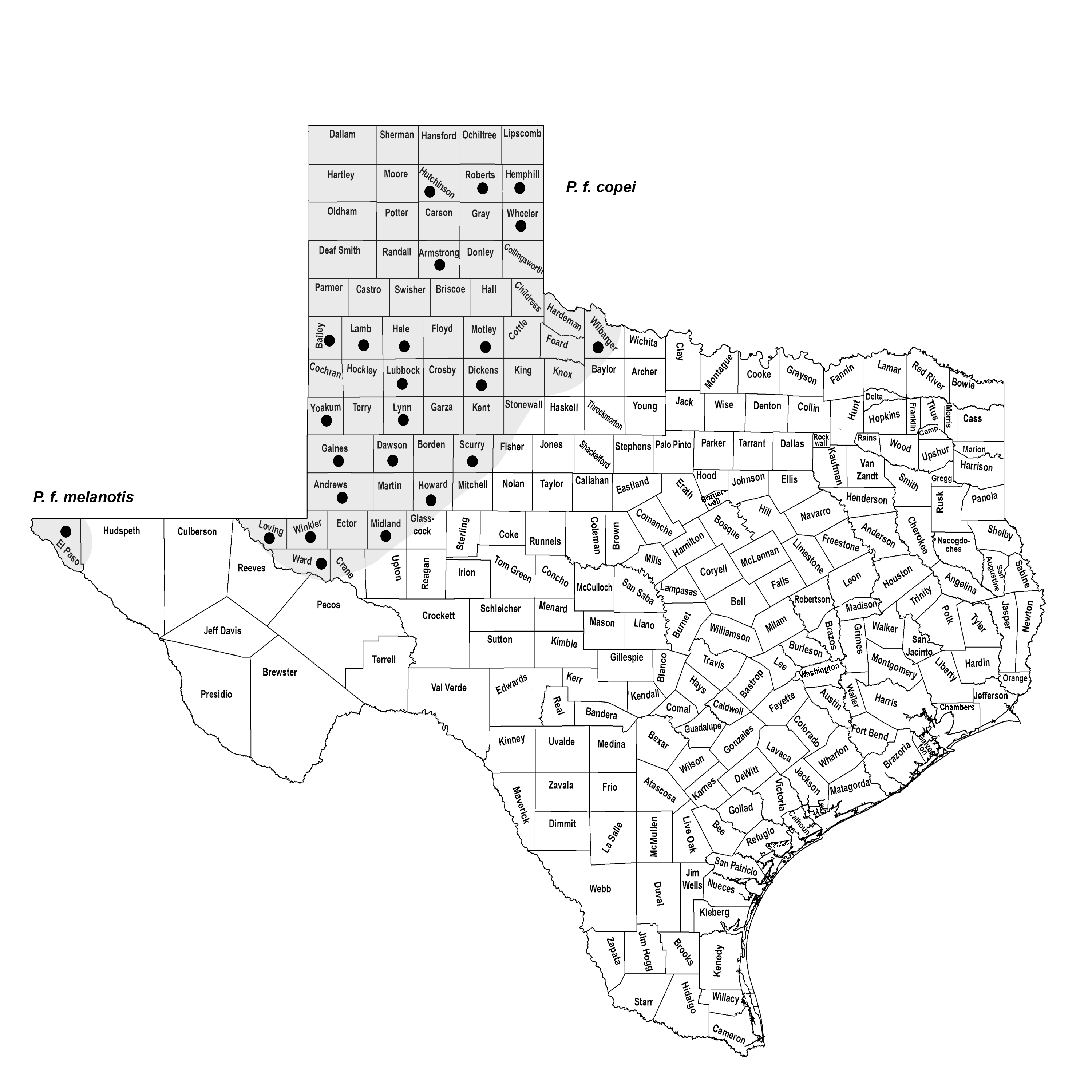PLAINS POCKET MOUSE
Perognathus flavescens Merriam 1889
Order Rodentia : Family Heteromyidae
DESCRIPTION. A small, silky, yellowish buff pocket mouse; upperparts more or less washed with blackish; pelage relatively short. Dental formula: I 1/1, C 0/0, Pm 1/1, M 3/3 × 2 = 20. Averages for external measurements: total length, 130 mm; tail, 61 mm; hind foot, 17 mm. Weight of adults, 8–11 g.

DISTRIBUTION. Occurs throughout the Great Plains region. In Texas this species is recorded from El Paso County and from the High Plains and adjacent areas in northwestern part of state, south to Ward County.

SUBSPECIES. Perognathus f. copei in northwestern Texas and P. f. melanotis in the western Trans-Pecos.
HABITS. This little pocket mouse is partial to sandy soils covered with sparse vegetation. In the sandhills of the Texas Panhandle, its burrows are commonly excavated beneath clumps of Spanish bayonet or prickly pear, the entrances usually so distributed as to open from under the plant. Usually the main entrance is plugged with soil from within during the day, and if it is opened the mouse closes it again. The several inconspicuous openings, hardly large enough to admit the end of one's finger, are seldom plugged and may serve as duck-outs.
Their food is almost exclusively the seeds of grasses and weeds. Food items found in their cheek pouches include seeds of needlegrass (Stipa), bindweed, sandbur grass, a small bean (probably Astragalus), and sedge (Cyperus). Even those caught in grain fields usually have their pouches filled with weed seeds. Seeds of two species of pigeon grass, a few other grasses, and wild buckwheat have been found in their underground food caches.
Knowledge of their breeding habits is meager. Pregnant females (carrying four to five fetuses) have been trapped in June–August. Specimens in juvenile pelage or molting from juvenile pelage have been recorded in May–August and October. No information is available on mating, gestation, birth, growth of the pups, and family life. It is possible this pocket mouse enters torpor during the coldest months of the year.
POPULATION STATUS. Common. The plains pocket mouse remains common throughout its range in the state.
CONSERVATION STATUS. The IUCN lists the plains pocket mouse as a species of least concern, and it does not appear on the federal or state lists of concerned species. It does not appear to face any immediate threats.
From The Mammals of Texas, Seventh Edition by David J. Schmidly and Robert D. Bradley, copyright © 1994, 2004, 2016. Courtesy of the University of Texas Press.
Natural Science Research Laboratory
-
Address
Museum of Texas Tech University, 3301 4th street, Lubbock, TX 79409 -
Phone
806.742.2486 -
Email
nsrl.museum@ttu.edu

